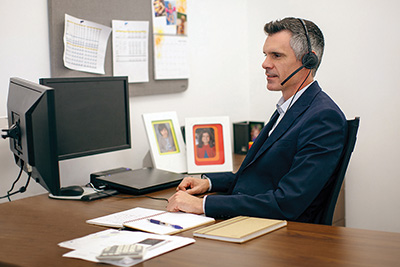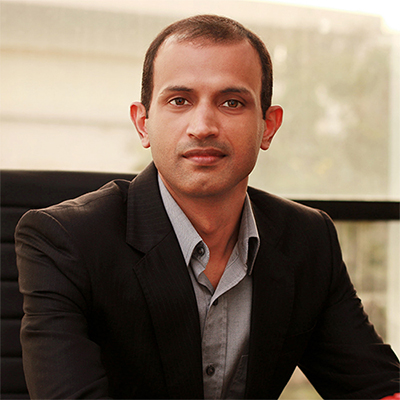Speech recognition software comes of age as a business tool
AS SPEECH recognition software finds its way into business systems, so innovators are finding new ways to use it to give their businesses an edge.
The speed of adoption of speech recognition systems has roughly matched the velocity of the software’s reliability in recent years – but now that reliability is there, it is the integration capabilities of particular speech recognition systems that determine its adoption. 
A good example is Nuance Communications Australia – a satellite of the US-based software developer that is a global leader in this field – which has just released its latest Dragon NaturallySpeaking 13. It now incorporates six accent recognition models, Australian, Southeast Asian, Indian, English, Canadian and American.
Version 13 aims to bring more accurate, natural and intuitive interaction with personal computers (PCs) and solidify Nuance’s reputation for being one of the fastest and most accurate speech recognition systems available for the PC
Productivity is the edge this new software version aims to provide, offering built-in microphone support, expanded voice capabilities for most popular web applications and with a more modern interface than previous versions.
Nuance’s chief marketing officer and general manager for Dragon, Peter Mahoney said with the help of Dragon, users were able to continue pushing the boundaries of productivity gains and ease of use with the PC.
“Dragon NaturallySpeaking 13 offers increased accuracy, improved design and flexibility, and a robust web experience – and that adds up to a more intuitive and productive experience for customers,” Mr Mahoney said.
“Dragon continues to serve as a complete voice solution for the PC, capable of impressive performance across programs, browsers and applications.
“Both new and long-time users of Dragon will find their interactions with the PC completely transformed, as they use their voice to get more things done in a faster and more natural way.”
Dragon NaturallySpeaking 13 aims to the PC experience by turning voice into text and actionable commands much faster than most people can type. By making navigation and text-entry tasks dramatically faster and easier, Dragon NaturallySpeaking 13 seeks to enable people to get more work done on a computer, more accurately and in a shorter period of time than most people can achieve through a keyboard and mouse.
Dragon 13has been tweaked by the Nuance developers to makeit easier to navigate, command and control a PC by voice and it supports fast, accurate dictation for local applications, such as Microsoft Word, and web applications including email and social media. By leveraging the latest advancements in Nuance speech recognition science and technology, Dragon 13 is faster and more accurate.
Dragon 13 has significantly enhanced out-of-the-box accuracy, and continues to get smarter as it automatically adapts to personal writing style and preferences by learning the words and phrases that an individual uses most. It opens up new possibilities for composing and editing documents, sending emails, searching the internet and updating popular social media sites like Facebook or Twitter.
Mr Mahoney said Dragon 13 offers support for many microphone options, including, for the first time, microphones built-in to many of the latest laptops, offering greater freedom and flexibility – no headset required. Dragon 13 automatically detects which microphones are available to use, so a user selects a preference and can simply start talking.
Dragon 13 now also supports voice commands and what is called Full Text Control. This uses the primary user’s voice to perform direct dictation, text selection or correction and cursor movement within text – and this works in popular web applications such as Gmail, Outlook.com and Yahoo! Mail in Chrome, Firefox and Internet Explorer.
A user can, for example, tell the computer to “open Internet Explorer” and, from there, speak to navigate to Facebook, scroll through a news feed and select photos and links. Voice will open Gmail, address and compose a message, insert a personal signature and send a note – with no typing or clicking required.
Dragon 13 also features a contemporary, intuitive interface and helpful tutorials that make using Dragon easier than it has been in the past.
In four steps, a Dragon profile can be set up. Helping to boost productivity is Dragon’s Learning Centre, which displays relevant help at the user’s fingertips.
The English version of Dragon NaturallySpeaking 13 Premium is available for download or can be box-shipped, costing $199.95. It is also available through Nuance’s global network of reseller partners, software retailers and professional sales organisations. Special upgrade pricing is available for current Dragon NaturallySpeaking registered users.
The English version of Dragon NaturallySpeaking 13 Home is also now available, starting at $99.95.
Additional language versions of Dragon NaturallySpeaking 13 Premium and Home will be available later this year. Dragon also has software tailored for Mac.
ends

 How to resolve AdBlock issue?
How to resolve AdBlock issue? 





 GETTING a product onto shelf in a retail store might become easier for fast-moving consumer goods (FMCG) suppliers with the development of a new online tool RANGEme, developed by a former Kellogg’s marketeer.
GETTING a product onto shelf in a retail store might become easier for fast-moving consumer goods (FMCG) suppliers with the development of a new online tool RANGEme, developed by a former Kellogg’s marketeer.